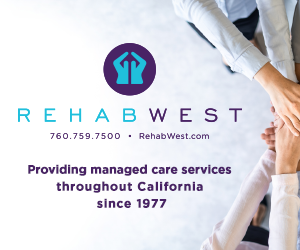Industry Insights
August 31, 2017
Barklage: 10 Ways to Help Injured Employees Recover
- National
- - 0 shares
You can’t escape it. The message is everywhere. An enormous shift in claims management ideology is upon us. An advocacy-based approach to managing injured workers is taking hold.
Why? Because it works. What is different about this approach? Rather than focusing solely on costs and procedures, the approach focuses on the needs of the injured employees.
While this approach has recently become a hot topic, there is evidence that many employers overlook, undervalue or interact poorly with the most critical element in the workers’ compensation process: the employee.
That told, it begs these questions: What is the “employee experience” when injured? Is anyone communicating with injured employees? What is the tone and content of communications? Does the employer genuinely care, and does the employee know this? Are there non-work-related factors, such as comorbidities, psychosocial barriers or family illness, impacting the claim?
Are employees fearful of losing their jobs? Does management behavior breed attorney involvement?
Critical elements
Developing answers to these types of questions can empower employers to take a more proactive approach to managing workers’ compensation losses, staffing and production issues while also creating a more positive workplace culture.
The development of an advocacy-based model starts with a comprehensive analysis of loss history, current and past mitigation efforts, and existing processes as well as organizational culture. Only then can a strategic and customized plan for managing workers’ compensation claims be developed.
Although no two programs are the same, an advocacy-based approach includes the following 10 components:
- Communicate, communicate, communicate — then communicate some more. The biggest flaw in communication is the assumption that it has taken place. Don’t assume that everyone involved in the process is aware of status and next steps. Make every attempt to talk with employees, not at employees.
- Zip it and listen. When injured workers are speaking, actively listen to what they are saying. Hear their words rather than thinking about your next question. Listen for what’s not being said.
- Go the extra mile. An unexpected action or gesture goes a long way. Don’t just do the minimum; show that you genuinely care about the injured worker’s well-being. A handwritten note is impactful, and sending food to aid with postsurgical recovery speaks volumes. Thinking outside the box about what would help an injured worker emotionally or physically can speed up recovery and shorten claim duration.
- Leave your baggage at the door. We all hang on to those old claims that we know in our gut were fraudulent or milked the system. Those claims will always exist. Don’t let baggage from past claims keep you from making a difference on the next one. Your workers’ compensation program should not be designed around a few “bad” claims and employees. Focus your program and behaviors on the vast majority of injured workers who just want to heal and return to full duty.
- If you say you’ll do it, then do it. People may not always remember what you did for them, but they will always remember broken promises. If you tell an injured worker you are going to do something, follow through. The moment you don’t, you’ll lose your credibility and ability to influence. Actions speak louder than words.
- Explore communication options. In-person communication is always the best method. Phone communication is another good method and may be the only option due to the geographic makeup of your organization. Email can be handy if you need to get things in writing. However, we live in a world of texting and social media. Millennials have grown up with these forms of communication. Employers should explore how their employees communicate and be willing to use different methods of communication.
- Talk, don’t type. Similar to exploring communication options, every attempt should be made to communicate via oral conversation and not default immediately to email or text. Often a two-minute conversation can eliminate 20 minutes of back-and-forth emails. In addition, communication can be easily misinterpreted when you can’t hear the tone of voice of the one communicating. Most importantly, it’s easier to develop and strengthen relationships when you talk than when you type.
- Treat all claims equally. Don’t focus solely on lost-time claims or claims believed to be fraudulent. Medical-only claims are just as important. Many claims start out as medical-only claims but convert to lost-time claims, often due to a lack of oversight in the first 60 to 90 days. By paying more attention to medical-only claims, you can reduce lost-time claims and lower your overall workers’ compensation costs.
- Walk a mile in their shoes. Put yourself in their situation and think about what the injured workers are going through. Treat injured employees the way you’d want to be treated. Or better yet, the way you’d want your loved ones treated.
- Celebrate success. Don’t overlook the small and simple day-to-day successes while helping employees through the recovery process, such as employees returning your call or being actively engaged in their recovery and return to work.
How can employers implement an advocacy-based approach?
Linking empathy and employee satisfaction with the workers’ compensation process is often handled best by an injury counselor. Injury counselors intervene as soon as a claim is reported. They serve as advocates for the employees, giving them a voice throughout the process and guiding their recovery and return to work.
Key focus areas include communicating timely, expressing empathy, minimizing or eliminating delays that can prolong the process, acting as a liaison between all involved parties and listening for what’s not being said.
Here are three real-life claim examples with positive outcomes due to an injury counselor’s successful use of the critical elements mentioned previously.
Claim No. 1
- Challenge: The employee had limited comprehension, a bilateral knee injury, lengthy delays with treatment, and multiple surgeries. His wage benefits were not timely, his supervisor was uncooperative, and the employee’s mother went through a long illness and eventually passed away.
- Injury counselor intervention: Established contact quickly with the employee and maintained frequent communication throughout the claim. Provided timely updates to the adjuster. Recommended a nurse be assigned to help avoid treatment delays. Helped the supervisor understand the situation, encouraging his cooperation.
- Resolution: The employee remains cooperative and wants to return to work following recovery. No attorney representation.
Claim No. 2
- Challenge: The employee is a traveling nurse who sustained a catastrophic injury involving bilateral foot fractures. Treatment involved multiple surgeries and rehab over a three-year period. The employee suffered from severe depression.
- Injury counselor intervention: Established contact quickly while the employee was in the hospital. Spoke frequently with the adjuster and the assigned nurse. Maintained communication with the employee, sometimes involving lengthy conversations. Listened to the employee’s fears and concerns, and offered hope and encouragement for recovery.
- Resolution: The employee was able to return to full duty three years later, without attorney involvement. Significantly reduced disability payments.
Claim No. 3
- Challenge: The employee sustained bilateral knee injuries while helping a resident. The employee was already treating for pre-existing issues with her knees and back, and did not want to go to the clinic used by the employer. Symptoms continued to worsen in her knees.
- Injury counselor intervention: Established contact with the employee quickly, removing initial fear. Worked with the employer to identify a medical provider that was more agreeable to the employee. Communicated with the provider to keep the treatment process moving. Facilitated positive communication between the employee and her supervisor.
- Resolution: The employee was satisfied with the care she received and cooperated with the process. No attorney representation.
Notice that a common denominator in these claims is establishing quick contact with the injured employee to begin developing a trusting relationship. Each of these claim examples involved one or more factors that could have easily resulted in the employee hiring an attorney. Fortunately, due to the injury counselor’s quick contact and responsiveness, this was avoided, and claim costs were minimized.
Is an injury counselor right for you?
An injury counselor, whether staffed internally or through a third party, can play an integral role in returning injured employees to work and reducing costs. However, every employer should lead with empathy, build trust with employees and focus on the human side of workers’ compensation.
To learn more
“Seven Ways Employers Can Reduce the Number of Workers’ Compensation Claims Involving an Attorney,” by Shawn Switzer, offers practical solutions for reducing attorney involvement. Many of the solutions are employee-centered, such as having a caring company culture, positive communication, transitional-duty programs and training supervisors on how to talk with injured workers.
Butch Frick’s “The Human Side of Workers’ Compensation” white paper discusses the impact of employee disengagement and dissatisfaction, suggesting that a way to overcome these issues is for employers to become more human and build trust.
Most recently, Mark Moitoso and Becky Kies’ “Leading With Empathy” white paper quantifies the impact of fear in the workers’ compensation process.
Andrew Barklage is vice president and manager of claims cost control for Lockton Cos. This column is republished with permission.
Advertisements
Columns
- Snyder: Public Benefit Rules Have Changed, but It Might Not Make a Difference 04/12/24
- Headrick: Clearing Up a Common Misconception 04/11/24
- Snyder: Litigation Guidelines Should Define Four Settlement Triggers 04/10/24
- Kirsch: Depositions of Comp Carrier Employees After Intervening in Third-Party Actions 04/09/24
- Wilson and Bennett: Could AI Have Prevented the Opioid Crisis in Workers' Comp? 04/08/24
- Moore: Pandemic Effect Over in March 2027. Really? 04/05/24
- Geaney: A Brief History of Our State's Workers' Compensation Act 04/04/24
- Kamin and Larres: Significant Panel Decision Clarifies Recon Confusion 04/03/24
- Gelman: Exposed to 'Forever Chemicals' 04/02/24
- Montgomery: Cyberattack Delays Payment of San Francisco Bills 04/01/24
- Young: Indoor Heat Regs in Turmoil 03/29/24
- Langham: Shootings and Compensability 03/27/24
- Geaney: Third-Party Liens Not Always Due Right Away 03/26/24
- Larres: State Supreme Court Denies Review of Our Appellate Win 03/25/24
- Moore: Recordkeeping and Your Remote Premium Auditor 03/22/24
- Switzer: Important Change Coming Soon 03/21/24
- Moore: Basic AI Claims Adjuster Assistant Works Well 03/19/24
- Montgomery: Availity to Return Providers' Bills 03/18/24
- Kamin: New Bill Would Clarify and Allow More Electronic Signatures 03/15/24
- Snyder: How Thorough Do You Have to Be? 03/14/24
Now Trending
- Workers' Compensation News
-
Calif. WCAB
Proposes $40k in Sanctions, Alleges
Pattern of Misusing Recon to Delay…
Posted on Apr 11, 2024
-
Calif. Committee
Passes TD Expansion, Ag Worker
Protection…
Posted on Apr 12, 2024
-
Calif. Senate
Committee Hears Comp Bills…
Posted on Apr 10, 2024
-
Calif. Worker
Waits Too Long to Sue Over Alleged
Chemical Exposure…
Posted on Apr 12, 2024
-
Calif. Contractor
Pleads Guilty to Underreporting…
Posted on Apr 15, 2024
-
Ill. Traveling
Employee Gets Award for Injuries
From Fall Down Stairs at…
Posted on Apr 10, 2024
-
Ill. Worker Who
Repeatedly Failed to Appear at
Hearings Can't Get Claim…
Posted on Apr 15, 2024
-
S.C. Supreme Court
Expresses 'Profound Concern' With
Administrative Denial of…
Posted on Apr 12, 2024
-
N.Y. Business
Owner Accused of $236,515 Premium
Fraud…
Posted on Apr 10, 2024
-
Neb. Lawmakers
Send Schedule Rating Bill to…
Posted on Apr 15, 2024
Jobs
Upcoming Events
May 5-8, 2024
Risk World
Amplify Your Impact There’s no limit to what you can achieve when you join the global risk managem …
May 13-15, 2024
NCCI's Annual Insights Symposi
Join us May 13–15, 2024, for NCCI's Annual Insights Symposium (AIS) 2024, the industry’s premier e …
May 13-14, 2024
CSIA Announces the 2024 Annual
The Board of Managers is excited to announce that the CSIA 2024 Annual Meeting and Educational Con …
Social Media Links
c/o Business Insurance Holdings, Inc.
Greenwich, CT 06836





No Comments
Log in to post a comment